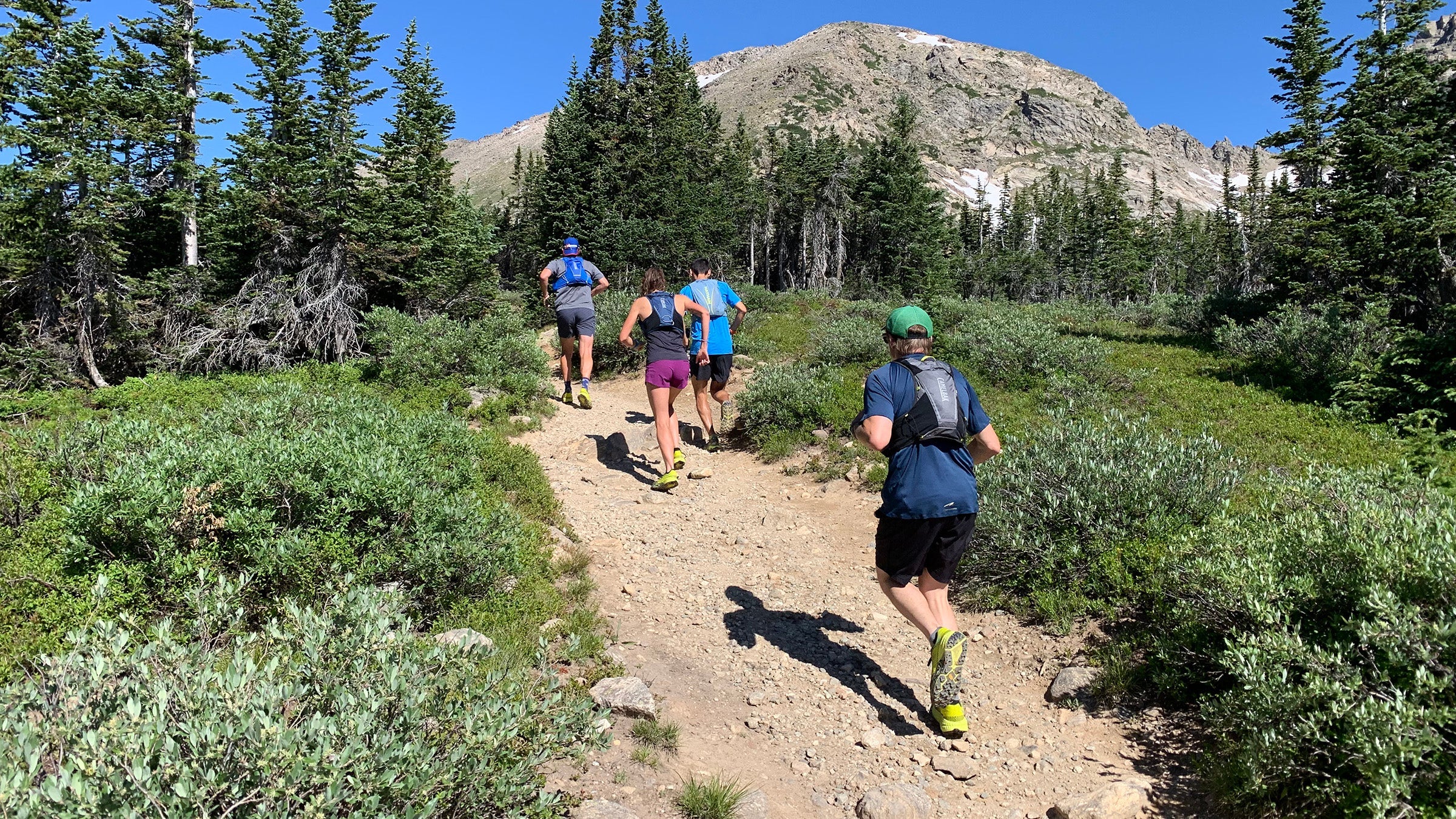No matter the surface or distance — from 5K’s to 10K’s and 100-milers in the mountains—everyone can benefit from hill training. Over my running career, I’ve found that that hills are very effective in building both speed and strength, so I use them a ton for quick one-hour power workouts.
The benefits are huge. Running uphill can effectively spike the heart rate and provide a boost in aerobic power without the high impact force of running rapidly on the flats or downhill, as well as strengthen the leg and core muscles. Not to mention, with the resistance of gravity, your body is fighting against nature to propel you.
This workout highlights the idea of running up just one big hill, and it can be done about once every other week during a peak training cycle.
Workout
After an easy warm-up jog of 10-15 minutes, follow it up with some light stretching and 100-meter flat accelerations at faster than 5km pace (i.e. 4 x 100m fast with 1:30 rest between). Find a very long hill or mountain trail that climbs at about 5-10 percent average grade, or even throw the treadmill on incline. It can be steeper for mountain runners.
The idea is to put in a steady, tempo run effort while climbing this hill for 30 minutes. For most people this is between about 85-90 percent of max heartrate, or about or about an 8 out of 10 on the doctor’s office pain scale. Keep in mind, with steep uphill grades this may be a very slow pace compared to your usual flat running tempo speed.
The main stress of the workout comes from the sheer amount of climbing and vertical gain you’re racking up, so it’s important to pace yourself and keep your intensity in check early on so that you can run with good form and not develop excessive lactic acid. If you start sprinting up the hill to begin, you’ll cross your lactate threshold and likely will be breathing too hard to recover without stopping the workout early.
Important Notes
This is not an all-out race effort or “king of the hill/FKT” workout. The idea with tempo runs is to maintain a comfortably tough intensity for relatively long durations of time. Because of the duration of this workout, we also recommend that you carry hydration with you. And don’t forget calories/snacks for the top of the hill! For mountain ultrarunners and marathoners, this can often be what you might be wearing during a race, so it is important you learn to drink and stay hydrated while doing a long, sustained climb.
Adaptations for the Workout
For very advanced runners targeting long mountain races, marathons and ultramarathons, this workout can be lengthened in duration, distance and climbing to move beyond the one-hour mark. However, keep in mind longer duration means taking the intensity down a notch to what we call “uptempo.” This might be an 80-85 percent max heart rate effort on average (compared to the 85-90 percent max heart rate average on the 20-30-min tempo), but it should feel steady and it will be harder because of the longer duration.
Sage Canaday was the youngest qualifier at the 2008 Olympic Marathon trials. Skilled on both road and trail, he ran his first ultramarathon in 2012, and since then has racked up numerous wins and records at some of the most competitive mountain ultras. Canaday and his girlfriend, fellow ultramarathoner Sandi Nypaver, are the owners and founders of Sage Running, an online running coaching website which markets training plans and e-books for the running community.
First published June 2018


